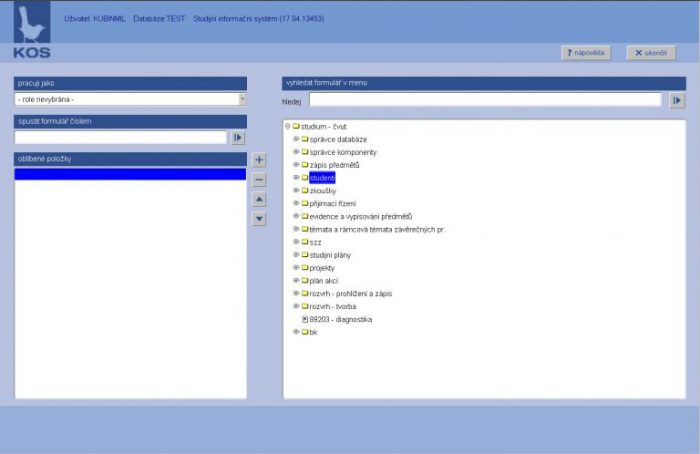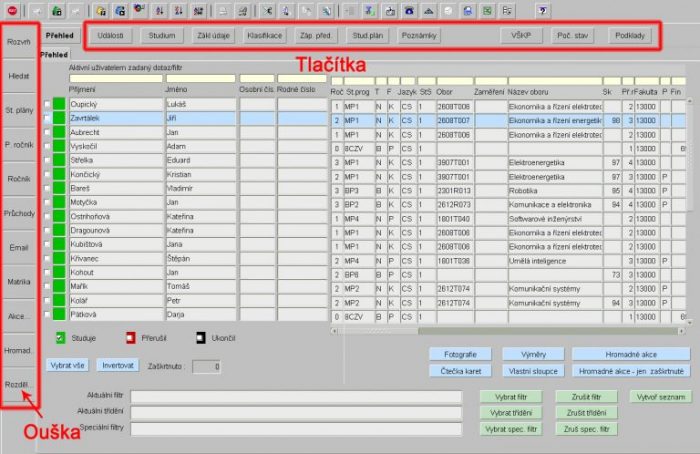!!! Translated by Google Translate !!!
The user interface is in the form of menus and forms.
- Menu: the menu is structured according to study agendas. Their availability is influenced by the role of the logged in user.

- A form is any screen that appears after selecting an item in the KOS menu. Data is loaded into forms from Oracle database. The general rule applies to all forms: the detail (s) of the selected record are available via the buttons at the top of the form, the functions above multiple records and available for the current form are available via the tabs located at the left edge of the forms.

- You can use the toolbar or shortcut keys for basic application control that allows you to create new records, sort, search, print, export, etc. Note that a significant difference is that the Esc key is not used to exit forms and escape functions, as is common with other applications. The keyboard shortcut F4 is used here.

| key | importance |
|---|---|
| F4 | escape key (exit form, close window,…) |
| F1 | help |
| Ctrl + K | display a list of all ‘live’ direct dial keys and their sequences |
| Ctrl + Insert | Copy selected text |
| Shift + Insert | Paste copied text |
| Ctrl + O | the author data will be displayed |
| ESC + F7 | display all text in case of longer text in KOS |
| F2 | confirmation of changes ie. saving |
| F7, F8 | enter a query: F7… enters query mode, fill in the filter values in the fields F8… query execution, only records according to query will be displayed in the form Esc + F8 after F7… shows the number of query records |
| Enter, respectively. F9 | move the cursor to the next, respectively. the previous form field |
| F6 | new record |
| EscF6 | cancel the record |
| EscF9 | deleting the field containing the cursor |
| F3 | value list menu (accessible when the word “List” appears in the lower right corner of the screen) |
| darts | move the cursor to the next, respectively. previous record within one block |
| PgDn, PgUp | move the cursor to the next, respectively. the previous form block |